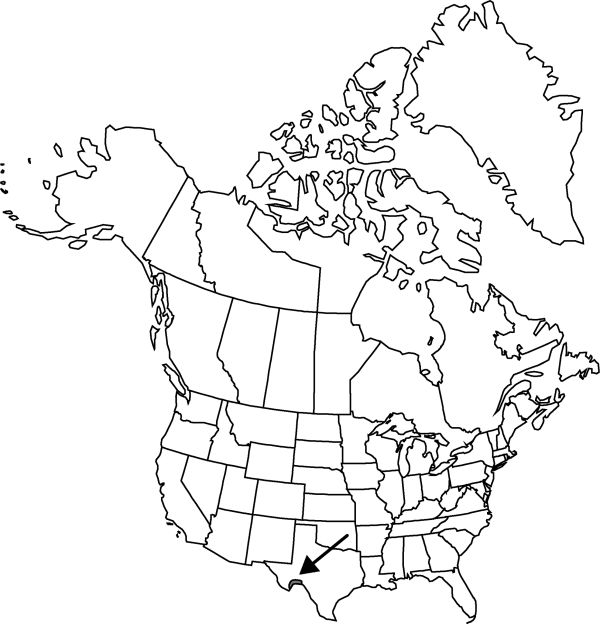Difference between revisions of "Coryphantha ramillosa"
Cact. Succ. J. (Los Angeles) 14: 164, fig. 96. 1942.
FNA>Volume Importer |
imported>Volume Importer |
||
| (5 intermediate revisions by 2 users not shown) | |||
| Line 6: | Line 6: | ||
|place=14: 164, fig. 96. 1942 | |place=14: 164, fig. 96. 1942 | ||
|year=1942 | |year=1942 | ||
| + | }} | ||
| + | |special_status={{Treatment/ID/Special_status | ||
| + | |code=C | ||
| + | |label=Conservation concern | ||
}} | }} | ||
|basionyms= | |basionyms= | ||
| Line 34: | Line 38: | ||
-->{{#Taxon: | -->{{#Taxon: | ||
name=Coryphantha ramillosa | name=Coryphantha ramillosa | ||
| − | |||
|authority=Cutak | |authority=Cutak | ||
|rank=species | |rank=species | ||
| Line 48: | Line 51: | ||
|publication title=Cact. Succ. J. (Los Angeles) | |publication title=Cact. Succ. J. (Los Angeles) | ||
|publication year=1942 | |publication year=1942 | ||
| − | |special status= | + | |special status=Conservation concern |
| − | |source xml=https:// | + | |source xml=https://bitbucket.org/aafc-mbb/fna-data-curation/src/2e0870ddd59836b60bcf96646a41e87ea5a5943a/coarse_grained_fna_xml/V4/V4_414.xml |
|subfamily=Cactaceae subfam. Cactoideae | |subfamily=Cactaceae subfam. Cactoideae | ||
|genus=Coryphantha | |genus=Coryphantha | ||
Latest revision as of 21:58, 5 November 2020
Plants unbranched (rarely to 25 branches), loosely bristly or shaggy, with gray, brown, or whitish general aspect. Roots diffuse or strong taproots 1/5 of stem diam. Stems deep-seated, aerial portion usually hemispheric or ± flat-topped, 0–9 × 4–9.5 cm; tubercles 8–20 × 6–9 mm, firm; areolar glands seasonally conspicuous; parenchyma not mucilaginous; pith 1/2 of lesser stem diam.; medullary vascular system conspicuous. Spines 14–27 per areole, largest spinesterete, adaxial spines (both radial and subcentral) ± elongate, often twisted, flattened to angled; radial spines (9–)13–16(–20) per areole, white, 12–30 × 0.2–0.3 mm; subcentral spines often present, few per areole; outer central spines (2–)3(–5) per areole, either projecting conspicuously or erect and spreading in same plane as the radial spines, dull white to dark gray or reddish brown to dark brown, usually with dark brown to purplish black tips; inner central spine 1 per areole, ± porrect, straight or the largest spinesslightly curved, 22–43 × 0.5–0.7 mm. Flowers apical or nearly so, 38–65 × 30–50 mm; outer tepals entire; inner tepals pale pink to deep rose-purple, grading to white proximally, with darker midstripes, at least near tip, 17–25 × 3–4.5 mm; outer filaments white; anthers bright yellow to pale orange; stigma lobes 6–7, white, 3.5–7 mm. Fruits dark green to pale gray-green, obovoid, spheric, or ellipsoid, (10–)16–21(–25) × (10–)12–16 mm, succulent; floral remnant strongly persistent. Seeds yellow, drying to reddish brown, spheric to comma-shaped, keeled proximally, strophiole replaced by a linear raphe, 1–1.5 mm, finely and weakly raised-reticulate. 2n = 22.
Phenology: Flowering summer–early fall (Aug–Nov); fruiting Nov.
Habitat: Chihuahuan desert scrub, limestone hills, ridges, benches
Elevation: 400-1000 m
Distribution

Tex., Mexico (Coahuila).
Discussion
Of conservation concern.
Coryphantha ramillosa is perhaps only a geographic race of the yellow-flowered C. delaetiana of northern Mexico. Coryphantha ramillosa differs from C. macromeris by several features: individual stems are more compact and rarely branched; areolar grooves (after sexual maturation) extend the full lengths of the tubercles; parenchyma is not slimy; and the pith is large and vascularized. The flowers are similar except for the long fringes on outer tepal margins of C. macromeris (entire in C. ramillosa and allied species).
Coryphantha ramillosa is in the Center for Plant Conservation’s National Collection of Endangered Plants.
Selected References
None.